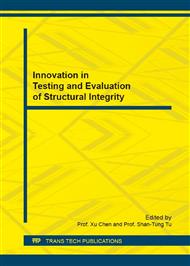p.328
p.335
p.341
p.346
p.351
p.356
p.361
p.366
p.372
Research on Full-Scale Hydrostatic Burst Testing of Different Pipeline Girth Weld Defects
Abstract:
Recently incidents related to cracking of girth welds in oil and gas pipelines occurred frequently. With highly concentrated stresses, girth weld defects may significantly reduce bearing capacity of pipelines. Many girth weld defects were detected in the in-line inspection and excavated verification. How to assess the severity of these defects to avoid the excessive and unnecessary repair was a technical challenge. Four different kinds of girth weld defects were manufactured in the 32-inch pipeline and full-scale hydrostatic burst testing were carried out to assess the pressure performance of these defects. Many fitness-for-purpose assessment methods were applied to verify the accuracy of experimental results. After the testing, pipelines with failure defects were cut out to carry out the microanalysis. The research results make us understanding the severity of these defects and avoid the excessive and unnecessary repair of these defects to ensure the pipeline safety.
Info:
Periodical:
Pages:
351-355
Citation:
Online since:
September 2016
Authors:
Price:
Сopyright:
© 2017 Trans Tech Publications Ltd. All Rights Reserved
Share:
Citation:


